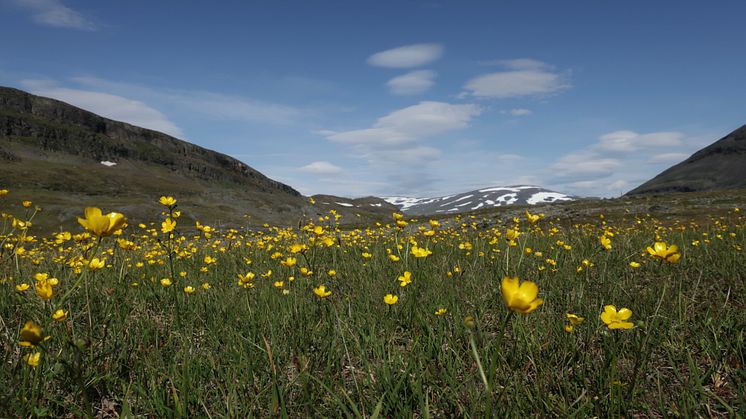
Press release -
One single rule helps explain life from ocean depths to open savannas
A new study published in Nature Ecology & Evolution has found a simple rule that seems to govern how life is organised on Earth. The researchers believe this rule helps explain why species are spread the way they are across the planet. The discovery will help to understand life on Earth – including how ecosystems respond to global environmental changes.
At first glance, Earth seems like a collection of wildly different worlds. Each region has its own species and environmental conditions. Yet, beneath this variety, there is a universal organising pattern, new research led from Umeå University shows. This finding can help scientists explore how biodiversity has been shaped through time and how biodiversity can response against global change.
The planet is divided into large biogeographical regions, or bioregions, separated by oceans, mountain ranges or extreme climates. These barriers limit the movement of species, turning each region into a natural experiment where distinct groups of species have evolved under different conditions, timescales, and histories.
In this study, an international collaboration of research institutions from Sweden, Spain, and the UK examined species from very different life forms in bioregions across the world: amphibians, birds, dragonflies, mammals, marine rays, reptiles, and trees. Given the vast differences in life strategies – some species fly, others crawl, swim, or remain rooted – and the contrasting environmental and historical backgrounds of each bioregion, the researchers expected that patterns of species distribution would vary widely across bioregions. Surprisingly, they found the same pattern everywhere.
“In every bioregion, there is always a core area where most species live. From that core, species expand into surrounding areas, but only a subset manages to persist. It seems these cores provide optimal conditions for species survival and diversification, acting as a source from which biodiversity radiates outward,” explains Rubén Bernardo-Madrid, lead author and researcher at Umeå University.
These findings support the disproportionate ecological role that some small areas play in sustaining the biodiversity of entire bioregions, and their conservation value.
The research also identifies the plausible mechanisms driving this pattern: the environmental filtering – the principle that only species able to tolerate local conditions, like heat or drought, can survive and colonise new areas. While this has long been a central theory in ecology, global empirical evidence has been scarce. This study provides broad confirmation across multiple branches of life and at a planetary scale.
“The predictability of the pattern and its association with environmental filters can help to understand better how biodiversity may respond to global change,” says Joaquín Calatayud, co-author from Rey Juan Carlos University.
About the scientific study
Bernardo-Madrid R, González-Suárez M, Rueda M, Revilla E, Rosvall M, Carrete M, et al. A general rule on the organization of biodiversity on Earth’s biogeographical regions. Nature Ecology & Evolution. 2025. DOI: 10.1038/s41559-025-02724-5
For more information, please contact:
Rubén Bernardo-Madrid, postdoctoral researcher, Department of Physics, Umeå University
Phone: +46 72 228 93 07
Whatsapp: +34 677 33 60 74
Email: r.bernardo.madrid@gmail.com
Topics
Categories
Umeå University is a comprehensive university and one of Sweden’s largest higher education institutions with around 38,000 students and 4,600 staff. We have a diverse range of high-quality educational programmes and research within all disciplinary domains and the arts. The University offers world-class educational and research environments and helps expand knowledge of global significance. This is where the groundbreaking discovery was made of the CRISPR-Cas9 gene-editing tool, which was awarded the Nobel Prize in Chemistry. At Umeå University, everything is just around the corner. Our tightly knit campus makes it easy to meet, collaborate and share knowledge, something that encourages a dynamic and open culture.




